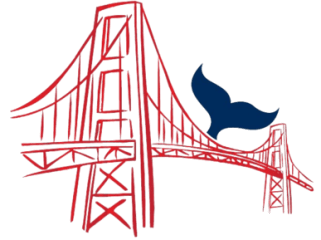Bird Watching Details
The up-welling process that occurs brings nutrients and oxygen-rich water close to the surface, fueling a rich food chain that supports large numbers of marine mammals and birds. Many of these birds may be seen on trips near the San Francisco Bay and in the Gulf of The Farallones throughout the year.
Visiting Birds
This high level of productivity also attracts other species, in addition to those that breed here. Visitors from the Southern Hemisphere include several Shearwaters:
- Sooty
- Short-tailed
- Flesh-footed
- Pink-footed
- Black-vented
- Buller’s
Occasionally we are lucky enough to see a few species that traditionally breed in Mexico:
- South Polar Skua
- Elegant Tern
- Xantu’s Murrelets
- Craveri’s Murrelets
Migratory Birds
These rich waters are also a destination along migratory routes for birds that breed further north or west of the California coast. These species include:
- Northern Fulmar
- Black-footed Albatross
- Laysan Albatross
- Fork-tailed Storm Petrel
- Red and Red-necked Phalarope
- Sabine’s Gull
- Arctic Tern
- Parasitic, Pomarine and Lon-tailed Jaegers
All Trips Include Bird Watching
Every tour is accompanied by a naturalist familiar with the seabirds of our region. Bird watching trips have been big hits with photographers, too!
On any given day in the Gulf of the Farallones, other birds including loons, grebes, scoters, alcids & various species of gulls & terns may be seen. Rarities such as boobies, petrels & tropicbirds have even made appearances for lucky bird watchers on occasion. Of course, varying weather & sea conditions mean that the number & variety of birds will always change from one visit to another. The motion of the boat, fog & sea spray can make viewing seabirds a challenging activity as well as a wonderfully satisfying one.
It will always be easier to see an albatross with a seven-foot wingspan than a small storm petrel flying away from the boat. We can’t predict or guarantee what you will see, but if you come aboard with a sense of adventure, it is very likely that you will have an adventure.
Of course, not every species will be observed on every single trip. Species breeding here include:
- Leach’s Storm Petrel
- Ashy Storm Petrel
- Double-crested Cormorant
- Brandt’s Cormorant
- Pelagic Cormorant
- Western Gull
- Tufted Puffin
- Rhinoceros Auklet
- Cassin’s Auklet
- Pigeon Guillemot
- Common Murre
